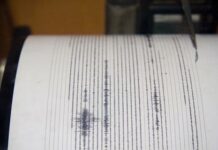On Feb. 15, Dr. Olivia Schaad and her colleagues gave a
presentation to the Gilroy Unified School Board on how the
elementary schools are doing in math instruction at this, the
midpoint of the school year.
On Feb. 15, Dr. Olivia Schaad and her colleagues gave a presentation to the Gilroy Unified School Board on how the elementary schools are doing in math instruction at this, the midpoint of the school year.
The answer is, overall, badly. Only 44 percent of Gilroy Unified School District elementary students have improved their proficiency percentiles since fall. The shining exception is Glen View School, where 250 out of 350 students, 71 percent, have improved.
Here’s the punchline: Glen View is being run by the state this year, because its performance was so dismal for the last two years. The state mandates 60 plus minutes in math instruction each day, direct instruction to the topics outlined in the state standards and delineated in our adopted textbooks and pacing the instruction to cover all required topics. In other words, they teach an hour of math each day from the textbook. What a concept.
One would think that the presentation to the school board would be largely about how Glen View School had accomplished its near-miraculous improvement, and how the other schools were planning to implement Glen View’s modus operandi as soon as possible. One would be mistaken to think that.
Instead, the presentation was largely an impassioned pep talk about the Noyce Foundation and its MARS test assessments. GUSD’s MARS test scores are going up, even as its CST scores languish or decline. (In my opinion, the improvement in MARS test scores is probably due to it being a subjectively scored test. The teachers who grade the test seem to be finding ways to favorably interpret math errors. But I digress.)
Noyce coach Karin Van Gerpen waxed eloquent about “quality of mathematical thinking,” “performance assessments,” “best practices,” “collaborative processes,” and “passion.”
Ms. Van Gerpen is optimistic that the improved MARS scores in elementary school will translate into high STAR scores in future years. She has no data to support her optimism.
Dr. Schaad wrapped up the presentation with recommendations: more facilitators, more collaboration, more curriculum mapping.
Questioned directly, she admitted that she did not know whether the elementary schools, other than Glen View, were following the pacing in the Harcourt Brace textbooks, which are aligned with the state standards. She admitted that the elementary schools, other than Glen View, were losing ground in basic skills.
Let me explain some things about math in general and elementary school math education in particular.
Math builds. In order to solve a simple quadratic equation in algebra, a student must be able to factor effortlessly. That means he has to have his times tables mastered.
A 6-year-old child thinks concretely. He can count objects.
A 12-year-old student may be beginning to use formal operations, to think abstractly. In order to make mathematical use of his new cognitive development stage, he must have mastered the addition, subtraction, multiplication, and division of whole numbers, fractions, and decimals. He should translate easily between percentages, decimals, and fractions.
That is a lot of arithmetic to learn in six short years. Unfortunately, the Noyce Foundation and other “new, new math” or “fuzzy math” approaches, in their quest to impart “higher level mathematical thinking,” tend to give short shrift to lower level mathematical thinking. They disdain it. “Drill and kill,” they say. “Mere rote memorization.”
If a child does not master that lower level mathematical thinking, those basics, he will be hamstrung when he gets to algebra.
Moreover, from a cognitive development point of view, the 7- to 11-year-old child is at the perfect stage to memorize vast quantities of data, and enjoy doing it. At this age, they collect things. They memorize baseball statistics. They memorize the thousand steps of play in a video game. They might as well memorize the times tables and the long division algorithm.
My recommendations for GUSD at this point are simple: figure out what Glen View is doing, and implement it at all elementary schools. Begin with the 60 minutes a day of math instruction, with extra time for remediation.
Use the Harcourt Brace textbooks. (I prefer Saxon, but the Harcourt are okay, and are bought and paid for.) Pace to complete the textbooks in the course of the year.
Abandon Noyce. It does not work.











